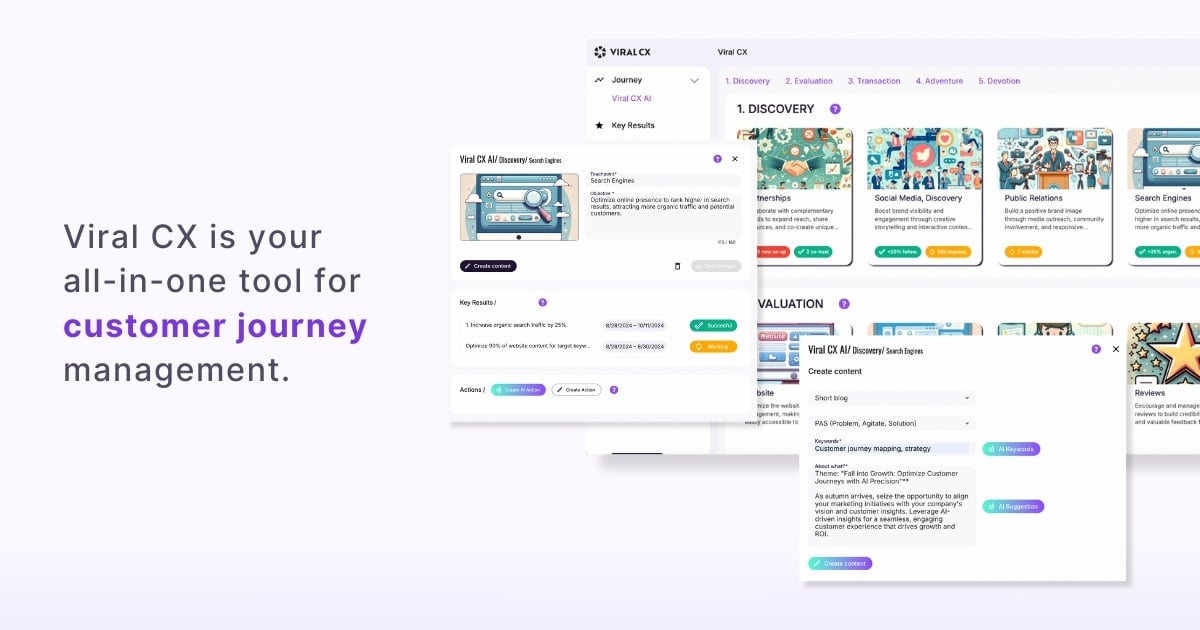How well do you really know your customers and their needs?
Is your marketing strategy truly aligned with your company’s vision, mission, and values?
These are fundamental questions every business leader should ask. Understanding your customers deeply and ensuring alignment between your marketing efforts and your core principles is key to driving engagement and fostering long-term loyalty.
Consider this: 65% of customers feel that brands don’t understand their needs. This statistic underscores the critical need for businesses to prioritize customer-centricity. Take Apple, for example. Their profound understanding of customer needs, coupled with a marketing strategy perfectly aligned with their vision of innovation, has cultivated a loyal customer base and propelled immense growth.
Now, imagine harnessing this approach for your own business. By adopting a customer-centric strategy and integrating Objectives and Key Results (OKRs), you can transform your operations, enhance customer satisfaction, and drive significant growth. With the right tools and strategies, like those offered by Viral CX, you can create a seamless and impactful customer experience that sets you apart from the competition.
What is a Customer-Centric Strategy?
A customer-centric strategy is a business approach that prioritizes the needs and experiences of customers at every touchpoint.
This strategy is important because it helps build lasting relationships, fosters loyalty, and drives repeat business. In today’s competitive landscape, understanding your customers and their unique needs is no longer optional—it's essential for sustained success.

6 Steps to Implement a Customer-Centric Strategy
Step 1: Define Your Vision, Mission, and Values
Why It’s Important? Your vision, mission, and values are the foundation of your business. They guide strategic decisions, shape your company’s culture, and influence how customers perceive your brand.
- Vision: Represents your long-term aspiration. It should be inspiring and reflect your ultimate goal.
- Mission: Outlines your core purpose and the key objectives you aim to achieve to fulfill your vision.
- Values: Establish the principles that drive your business operations and behaviors.
How to Do It:
1. Vision Statement:
- Ask yourself, “What do we ultimately want to achieve?”
- Keep it concise and inspirational.
- Example: “To revolutionize the way the world communicates.”
2. Mission Statement:
- Define what you do, who you do it for, and how you do it.
- Ensure it’s actionable and clear.
- Example: “We provide innovative communication solutions that connect people globally.”
3. Core Values:
- Identify 3-5 principles that reflect your company’s beliefs.
- They should resonate with your team and customers.
- Examples: Integrity, Innovation, Customer-Centricity, Sustainability.
Using Viral CX, you can input and refine these elements to ensure they align with your overall strategy and resonate with your target audience.
Step 2: Define Your Ideal Customer
Why It’s Important? Understanding who your ideal customer is allows you to tailor your marketing efforts to meet their specific needs and preferences. This leads to more effective campaigns and a higher return on investment.
How to Do It:
1. Demographics:
- Age, gender, location, income level, education.
- Example: Women aged 25-40 living in urban areas.
2. Psychographics:
- Lifestyle, values, interests, attitudes.
- Example: Health-conscious, values sustainability, interested in technology.
3. Behavioral Patterns:
- Purchasing habits, brand interactions, loyalty levels.
- Example: Prefers online shopping, loyal to eco-friendly brands.
Viral CX assists you in creating a detailed ideal customer profile by analyzing data and providing insights into who your best customers are.
Step 3: Map the Customer Journey
Why It’s Important? Mapping the customer journey allows you to visualize the entire experience from the customer’s perspective. It helps identify key touchpoints and areas where you can enhance the customer experience.
How to Do It:
1. Identify Touchpoints:
- List all points of interaction, from awareness to post-purchase.
- Examples: Social media ads, website visits, customer service calls, product usage.
2. Analyze Interactions:
- Understand customer actions, motivations, and pain points at each stage.
- Ask questions like “What is the customer thinking and feeling here?”
3. Identify Gaps and Opportunities:
- Look for stages where customers face challenges.
- Find opportunities to exceed expectations.
With Viral CX, you can create a comprehensive customer journey map that highlights key touchpoints and opportunities for improvement.
Step 4: Define Customer Pains and Needs
Why It’s Important? Knowing the pains and needs of your customers allows you to address their concerns effectively and provide solutions that meet or exceed their expectations.
How to Do It:
1. Conduct Research:
- Use surveys, interviews, feedback forms.
- Engage with customers directly to gather honest insights.
2. Analyze Data:
- Look for common themes and patterns.
- Prioritize based on frequency and impact.
3. Create Empathy Maps:
- Visual tools that capture what customers say, think, feel, and do.
Viral CX enables you to analyze customer data efficiently with AI, pinpointing their main challenges and needs.
Step 5: Address Customer Pains and Needs with Objectives and Key Results (OKRs)
Why It’s Important? Setting clear Objectives and Key Results (OKRs) helps you address customer pains and needs in a structured and measurable way. This ensures your efforts are focused and aligned with your overall strategy.
How to Do It:
1. Set Objectives:
- Define what you want to achieve to alleviate customer pains.
- Objectives should be ambitious and inspirational.
- Example: “Enhance customer support responsiveness.”
2. Define Key Results:
- Establish 2-5 measurable outcomes per objective.
- Key Results should be specific, time-bound, and verifiable.
- Example: “Reduce average response time from 24 hours to 2 hours within 3 months.”
3. Align with Customer Journey:
- Ensure OKRs impact relevant touchpoints.
- Assign ownership to team members.
Viral CX provides a framework for setting and tracking OKRs, integrated with your customer journey map, helping you stay focused on addressing customer needs effectively.
Step 6: Create Actions and Content to Reach Your Ideal Customer
Why It’s Important? Engaging content and targeted actions are essential for reaching your ideal customers and addressing their specific needs. This helps build trust and loyalty, driving long-term success.
How to Do It:
1. Develop an Action Plan:
- Outline the steps required to achieve your OKRs.
- Assign tasks and deadlines.
2. Craft a Content Strategy:
- Determine the types of content that resonate with your audience (blogs, videos, social media posts).
- Align content with each stage of the customer journey.
3. Personalize Communication:
- Use customer data to tailor messages.
- Example: Email campaigns that address specific customer segments.
4. Monitor and Adjust:
- Track performance metrics.
- Be prepared to adapt strategies based on feedback and results.
Viral CX assists you in creating tailored content and actions, ensuring your marketing efforts are effective and impactful.
How Viral CX Makes It Easy to Implement OKRs

Implementing OKRs doesn’t have to be a daunting task. Viral CX simplifies the process by integrating OKRs into the key touch points of your customer journey.
• Integrated Platform: Combines customer journey mapping, OKR setting, and content creation in one place.
• AI-Powered Insights: Leverages data to provide actionable recommendations.
• Customizable Templates: Offers ready-to-use templates for vision statements, customer profiles, journey maps, and OKRs.
• Collaboration Tools: Enables your team to work together seamlessly, ensuring alignment and clarity.
With Viral CX, you can confidently adopt a customer-centric approach, enhancing your ability to meet customer needs and drive business success.
Get Started Today with 5 Simple Steps:
- Sign Up for Viral CX: Begin your journey toward a more focused and effective strategy.
- Define Your Core Elements: Use the platform to articulate your vision, mission, and values.
- Understand Your Customers: Create detailed ideal customer profiles and map their journey.
- Set Focused OKRs: Align your objectives with customer needs and business goals.
- Implement and Monitor: Launch your action plans and track progress within Viral CX.
Embrace a customer-centric approach with clear objectives and measurable results. With Viral CX, you have the tools and insights needed to create a seamless and engaging customer experience that not only meets but exceeds expectations.